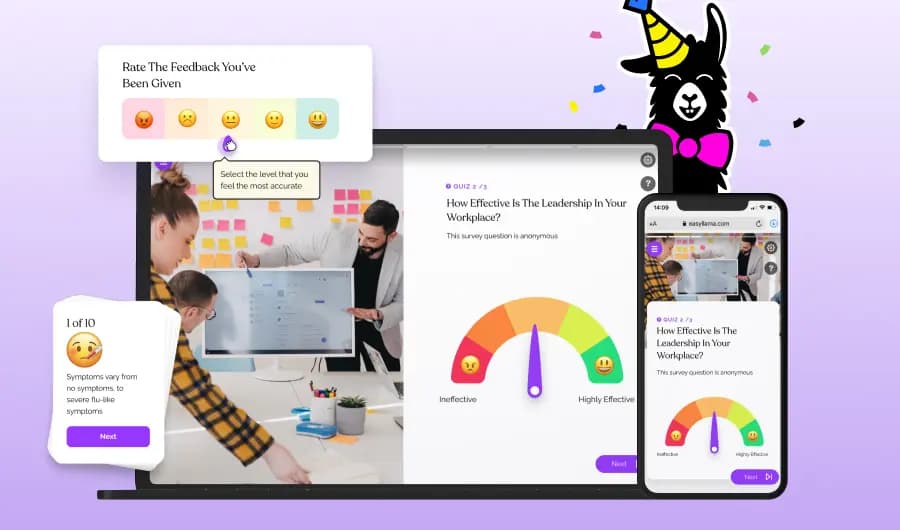
Product
Five Phases of Managing a Project To Enhance Efficiency
Project management can be confusing. Many people think it's just about managing project schedules, but it involves much more. Luckily, we've created a simple guide to help you understand the five project management phases.
Why is it important to know these five phases? Understanding them will help you establish better internal processes.
Five phases of the project management life cycle
The project management process consists of five main phases, as established by the Project Management Institute (PMI) in the Project Management Body of Knowledge (PMBOK® Guide). This guide is widely regarded as a valuable resource for professionals seeking to improve their project management skills.
Let's start with a brief overview of these five phases in project management:
1. Project initiation
During the initiation phase of the project management model, the project is defined at a broad level. This involves identifying project sponsors and stakeholders, and commencing initial research activities. It's advisable to document the project comprehensively to facilitate communication among team members. Some teams opt for an initial project kickoff meeting or feasibility study to start the project, depending on their preferred communication style.
Alongside introducing the project's initial idea, it's essential to outline its benefits, costs, and associated risks. Additional metrics may also be outlined based on the organization's success criteria.
Following the project assessment, a business case or, for smaller projects, a project charter is developed. These tools assist in detailing and presenting the project thoroughly, including its goals, budget, and timeline. Whether a business case or a project charter is created, these documents serve as valuable references for clarifying project objectives in the future.
2. Project planning
In the project planning stage of project management, you'll establish clear goals using a project roadmap. There are various methods for goal planning, including SMART goals, CLEAR goals, and Objectives and Key Results (OKRs), which serve as effective project planning strategies to initiate the process.

SMART goals
SMART goals is an acronym representing Specific, Measurable, Achievable, Realistic, and Time-bound objectives. This method is widely adopted by teams due to its effectiveness in enhancing communication, setting clear objectives, and enabling tracking of progress through measurable metrics.
CLEAR goals
CLEAR goals is an acronym denoting Collaborative, Limited, Emotional, Appreciable, and Refinable objectives. This approach is favored by many teams as it is more practical to implement and emphasizes collaboration.
In essence, SMART is about setting clear and measurable objectives within a defined timeframe, while CLEAR focuses on fostering collaboration, emotional engagement, and adaptability in goal-setting.
OKRs
OKRs stand out distinctly from the other two methods. This approach allows goals to be accessible across the entire company, fostering transparency throughout the organization. Unlike beginning with a project and subsequently defining objectives, OKRs initiate with the objective and then develop projects aligned with that goal.
SMART goals vs. CLEAR goals vs. OKRs
Although the three strategies employ different methods, they yield comparable outcomes. It's your decision to select the approach that aligns best with your business objectives.
In the project planning phase of project management, you may also utilize milestone charts, Gantt charts, and project risk management analyses to provide clarity for stakeholders. While some of these aspects may have been identified during the project's initial scope, the planning phase presents an ideal opportunity to elaborate on objectives, goals, and risks.
3. Project execution
During the execution phase, your team will work on reaching the goals set earlier. They'll use the information collected in the initial steps to start and carry out the project within the agreed-upon timeframe through teamwork.
Start by assigning tasks to team members. If you use project management tools, add these tasks to your project workflow for easy access to resources and communication. Tools like timeline software help visualize each project step.
Next, establish how success will be measured. This could include specific indicators or goals to meet after the project.
Because deadlines and workloads change, update the project schedule as needed and mark tasks as completed when finished. If you have strict deadlines, prioritize tasks accordingly. Regularly check in with team members to ensure progress and meeting goals.
Although schedules may shift, try to stick as closely as possible to the original timeline to avoid expanding the project scope too much.
4. Project performance
Assessing how well a project performs is crucial for a few reasons. It helps us make the project better, and it's a chance for team members to learn from what worked and what didn't. There are many different ways to measure how successful a project is. Which metric to use depend on the type of work we do and the project itself.

First, we should look at whether the project achieved its main goal. Did it solve the problem it set out to fix? It's easy to lose sight of this, but it's important to keep in mind when judging how well the project went.
Next, we can consider other measurable key performance indicators (KPIs) to see if the project was successful. Some common ones include return on investment (ROI), cost performance index (CPI), planned value (PV), actual cost (AC), and earned value (EV), but there are plenty more.
It's important to share with stakeholders how the project went, both the good and the bad. Being honest and open to feedback helps everyone learn from mistakes and improve in the future.
5. Project closure
The “project closure” stage can differ greatly among companies and teams. While some prefer to recognize hard work, others quickly move on to the next task. There's no one-size-fits-all way to close a project; it depends on what works best for your team.
When wrapping up a project, consider meeting with stakeholders for a detailed review of success, often called a "post mortem" meeting. Beforehand, sending out an anonymous survey can help cover important issues. Reviewing the key performance indicators (KPIs) measured during the project helps everyone understand what went well and what didn't, preventing similar mistakes in the future.
It's also a good idea to organize project materials in a shared folder for easy access. This includes project briefs, templates, design files, and more, which are helpful for evaluating performance.
One aspect often overlooked is continuing to monitor performance even after the project is closed. Do you tend to forget about old projects once they're done? It's important to keep testing and improving how projects are done to keep growing as a business.
Benefits of executing projects in five phases
Managing a project often feels like exploring unfamiliar territory, where unexpected hurdles and changing priorities can throw things off track. Adopting the five project management phases—initiation, planning, execution, performance, and closure—provides a structured approach to tackle these challenges, ensuring thorough attention to every aspect of the project.
By following these phases, project managers can ensure a more organized and systematic project execution, leading to greater project success. Here's what you can expect.
1. Better teamwork and stakeholder involvement
At the starting phase, defining the project scope and involving key stakeholders sets a clear direction for everyone involved.
2. Smarter planning and resource management
Creating a detailed plan and managing resources effectively ensures smooth project execution. For instance, in software development, this means assigning tasks and planning timelines.
3. Efficient implementation and flexibility
Agile methodologies allow teams to adjust to changes quickly. For example, when developing an application, changes in the market may be observed that will require to quickly regroup and adopt it, adjusting the initial plan.
4. Keeping track of progress
Regular monitoring ensures that the project stays on track with the schedule and budget. For example, in a marketing campaign, metrics are regularly reviewed to meet goals.
5. Wrapping up projects effectively and learning for the future
Finalizing work, obtaining approvals, and evaluating the project's success are crucial. Proper documentation captures lessons learned for future projects, improving processes over time.
Hints for effective project management
In today's work environment, where people often use many apps and remote work is common, teamwork is crucial. That's why project management is so important for any successful organization. Whether your team is small or large, keeping tasks and communication organized can be tough. Following these project management steps can help your team stay focused and get more done.
Besides understanding the project management process, there are other benefits too. Using the right project management tools not only keeps work organized but also helps teams work better together, be more efficient, and communicate better. This means more time to focus on important tasks, like growing the business.
To improve your methods, it's helpful to keep learning about new tools and techniques. While traditional methods like Kanban boards and Scrum have been useful, there are also new software options that can boost your team's productivity and success. The key is to keep trying new things and finding what works best for your team.
Addressing the challenge
With many aspects to consider, it can feel daunting to know where to start. But it's actually quite straightforward: begin by supporting your team. Always keep in mind that the purpose of project management and your main task as a project manager is to help your team members do their best work.
The project management methods and tools you use should improve communication, enhance productivity with helpful software, and ease deadline pressure. When unsure, ask your team for input. You'll be surprised at what a group of people can achieve when they work together effectively.
About Scalio
Scalio is a global digital product agency driving digital success in over 30 industries. Through expert engineering, strategy, and design, we build and scale platforms and digital experiences for global brands.
Learn more about our expertise in your industry.
_
If you have more questions or interest in meeting Scalio Leadership Team, feel free to reach out for a friendly follow-up!

Lawrence Valenti
CCO | Managing Partner
Email: lawrence@scal.io
LinkedIn

Joshua Lucas
COO | Managing Partner
Email: jlucas@scal.io
LinkedIn

Micah Lucas
CTO | Managing Partner
Email: micah@scal.io
LinkedIn

Bradley Greenwood
CEO | Managing Partner
Email: bradley@scal.io
LinkedIn





